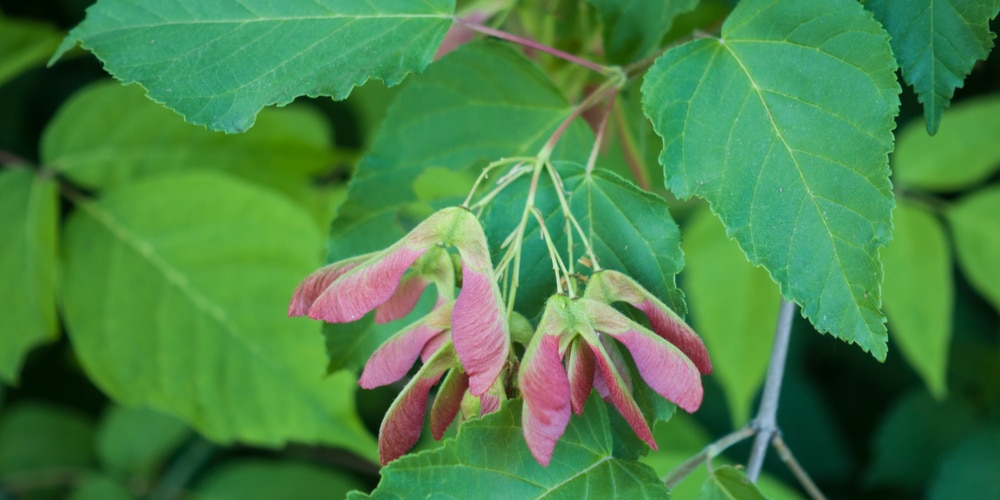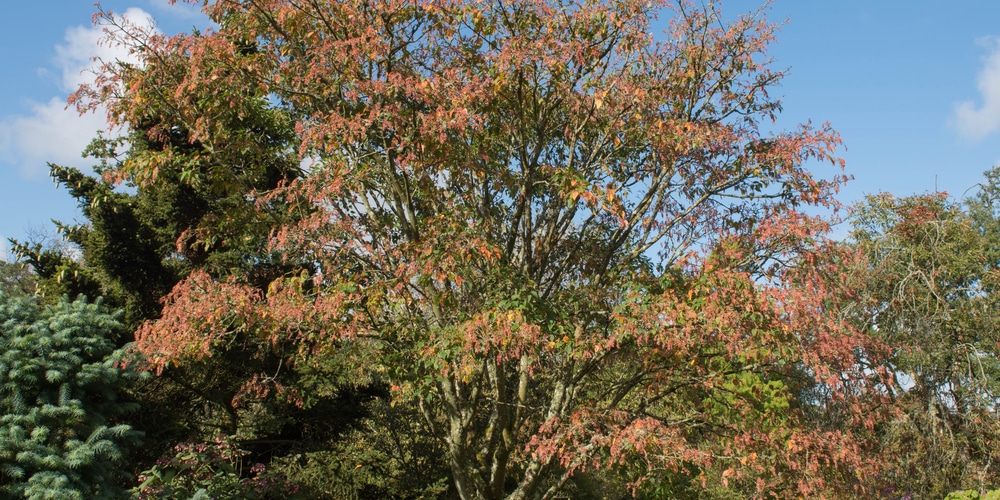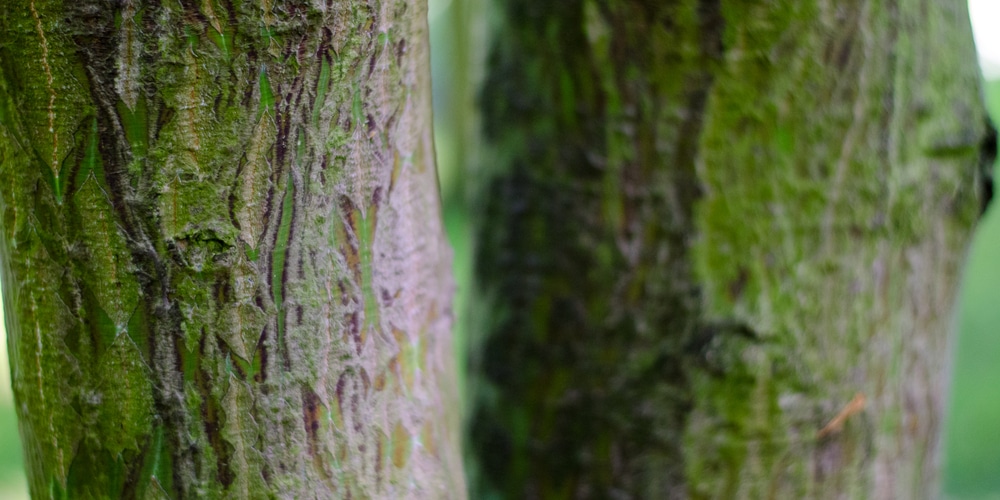It’s rare to find such an imposing tree in a home garden, but the Acer Davidii is hard to miss. Towering over other trees and shrubs, this deciduous behemoth can reach heights of over 30 feet (9 meters) in the right conditions.
And yet, despite its size, the Acer Davidii is still a popular choice for home gardens, thanks to its easy care requirements and stunning good looks.

| Botanical Name | Acer Davidii |
| Common Name |
Snakebark Maple |
| Plant Type | Perennial |
| Flower Color | Golden yellow that grows in clusters |
| Size When Mature | 360 – 480 inches tall |
| Bloom Time | Early Spring to Mid Spring |
| Sun Requirements | Partial sun, can tolerate full sun |
| USDA Hardiness Zones | 5 – 7 |
| Soil PH Range | 6.0 – 8.0 |
| Soil Type | Sandy loam, moist, fertile, well-draining |
| Water Needs | Medium |
| Native Area | China and Myanmar |
What You Need to Know About Acer Davidii
Also known as the Snakebark Maple, the Acer Davidii is a native of China. It was introduced to Europe in the late 19th century and has been a favorite of gardeners ever since.
The Snakebark Maple gets its name from the distinctive striping on its bark, which can be various shades of green, yellow, orange, or red. This tree is also known for its lush foliage, which comprises large, hand-shaped leaves that turn a beautiful golden yellow in the spring.
Acer Davidii trees are generally slow-growing, but they can reach impressive heights if given enough space to spread out. Moreover, it is often wider than taller, thanks to its branching habit. This tree is also relatively short-lived, with a lifespan of around 20-30 years.
In addition to its unusual appearance, the Snakebark Maple is also known for being relatively easy to care for. It is a hardy plant that can tolerate a wide range of conditions, given that its roots have enough space to spread out.
How to Care for Acer Davidii
Here’s everything you need to know about growing and caring for a thriving Acer Davidii.
Light
In general, the Snakebark Maple prefers cool, shady conditions, but can tolerate full sun. It thrives in areas that have cool summer temperatures and plenty of moisture. Ideally, it should get around direct sunlight during the morning, followed by dappled sunlight or shade in the afternoon.
If you live in an area with hot summers, it’s best to grow Acer Davidii in a shaded spot to protect it from the intense heat.
Water and Soil Needs
An inch of water per week is sufficient for most plants, and the same goes with Acer Davidii. However, during prolonged periods of drought, you may need to increase your watering schedule to ensure that your tree doesn’t suffer from drought stress.
When it comes to soil, the Snakebark Maple is not particularly picky. It will do well in a wide range of soils, as long as they are well-draining. Ensure that the soil is moist though, not soggy – this tree does not like wet feet. Adding mulch to the tree’s base will help retain moisture and suppress weeds. In fact, studies have shown that mulched trees show faster growth rates than those that are not.
Temperature Requirements
As mentioned earlier, this tree is tolerable to a wide range of temperatures but prefers cooler climates. It will not do well in areas with prolonged periods of heat and drought. If you live in such an area, it’s best to grow Acer Davidii in a shaded spot to protect it from the intense heat.
It thrives in USDA hardiness zone 5 to 7 and can withstand temperatures as low as -20 degrees Fahrenheit (-29 degrees Celsius).
Fertilizer
Fertilizing your Acer Davidii is not necessary, but if you want to give it a little boost, you can do so in the spring. Use a balanced fertilizer that is low in nitrogen to avoid promoting too much leaf growth at the expense of flowers and fruits.
If you have to use a fertilizer, the best fertilizer to use for an Acer Davidii is a 10-10-10 fertilizer. This will provide your tree with an adequate amount of nitrogen, phosphorus, and potassium.
Common Diseases
Surprisingly, Acer Davidii is relatively resistant to pests and diseases but can be susceptible to powdery mildew, Verticillium wilt, and tar spot. These problems can usually be controlled with proper cultural practices and a regular fungicide product.
Powdery mildew is a common fungal disease that affects a wide range of plants, including Acer Davidii. It manifests as white, powdery spots on the leaves and can eventually lead to leaf drop.
The best way to control powdery mildew is to prevent it in the first place by ensuring that your tree has good air circulation. If powdery mildew does appear, you can use a fungicide to get rid of it.
Acer Davidii Propagation
The snakebark maple is a popular tree for ornamental gardens, and it can be propagated from seeds or cuttings. Cuttings should be taken from young trees in the spring or summer. It’s important to take note that the cuttings should be about 6 inches long, and they should be placed in a pot of moist sand or peat moss.
From there, the pot should be kept in a warm, sunny location, and the cuttings should be watered regularly. After several weeks, the roots will develop, and the cuttings can be transplanted into individual pots. Seeds can also be collected from mature trees in the fall.
The seeds should be stratified, meaning that exposing them to cold temperatures for several weeks before being planted in the spring is needed. This will help to break dormancy and encourage germination.
After stratification, the seeds can be planted in individual pots filled with sterile potting mix. The pots should be placed in a warm, sunny location, and the seeds should be kept moist.
Related Article: 9 Maple Trees That Will Grow Well in the Colorado Climate

